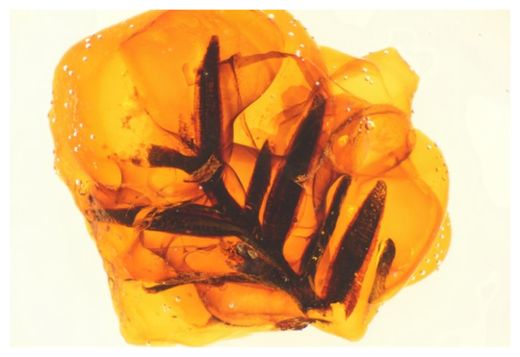
If a new study from scientists at the Universities of Kansas and Alberta is correct, then the atmosphere of the Cretaceous had a relatively low oxygen content - making the high-oxygen theories severely flawed.
"We do not want to negate the influence of oxygen for the evolution of life in general with our study, but the gigantism of dinosaurs cannot be explained by those theories," said study author Ralf Tappert, from the University of Alberta.
In the study, which was published in the journal Geochimica et Cosmochimica Acta, an international team recreated the makeup of the Earth's atmosphere during the last 220 million years by analyzing modern and fossilized plant resins. Fossilized resins, like amber, are just a few of the organic materials capable of holding reliable data on the Earth's geological history over millions of years.
"Compared to other organic matter, amber has the advantage that it remains chemically and isotopically almost unchanged over long periods of geological time," Tappert explained. "During photosynthesis plants bind atmospheric carbon, whose isotopic composition is preserved in resins over millions of years, and from this, we can infer atmospheric oxygen concentrations."
The study team performed a radioactive analysis of nearly 540 amber samples from amber deposits around the world, with the oldest samples being about 220 million years old. The team compared results from the fossilized amber with modern resins to confirm the validity of their data. They found atmospheric oxygen over the past 220 million years averaged considerably lower than today's 21 percent.
"We suggest numbers between 10 and 15 percent," Tappert said.
The results are much lower than those found by previous investigations, which have found levels of up to 30 percent atmospheric oxygen in some cases. The researchers said they looked at the results of their study in the context of events in the Earth's history.
"We found that particularly low oxygen levels coincided with intervals of elevated global temperatures and high carbon dioxide concentrations," Tappert said, adding that oxygen may influence carbon dioxide levels and could speed up the influx of carbon dioxide into the atmosphere.
"Basically, we are dealing here with simple oxidation reactions that are amplified particularly during intervals of high temperatures such as during the Cretaceous period," he said.
The study team concluded that a boost in carbon dioxide levels, possibly caused by volcanic activity, was followed by a decrease in atmospheric oxygen. The scientists noted the comparably low temperatures of the more recent ice ages may be due to the absence of large scale volcanic events and a rise in atmospheric oxygen.
The team also concluded that atmospheric oxygen may indirectly influence the climate, and therefore, the evolution of life on Earth. They suggested future studies be focused on analyzing even older plant resins.



Reader Comments
to our Newsletter